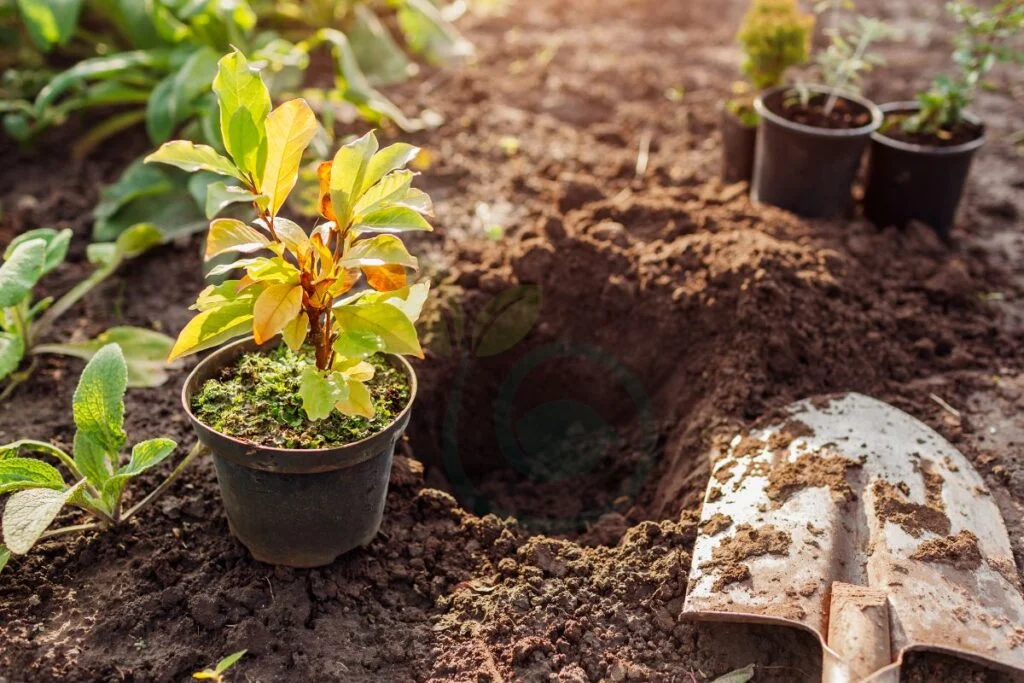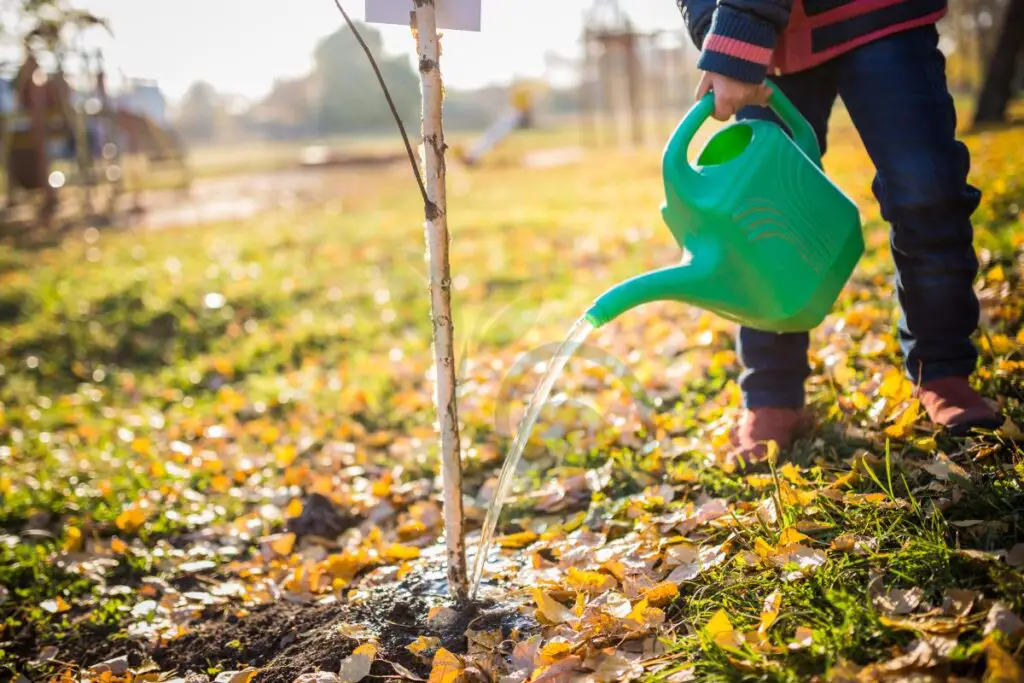Ever wondered how to successfully transplant a magnolia shrub without causing it stress or harm? Whether you're relocating, redesigning your landscape, or simply seeking to give your magnolia tree a new lease on life, mastering the art of transplantation is crucial. In this guide, we'll delve into the essential steps and tips for ensuring a smooth and successful magnolia tree transplant, including root pruning and move. From selecting the right time of year for minimal shock to preparing the new planting site with optimal soil conditions, we've got you covered. You'll also learn about proper aftercare techniques that will help your transplanted magnolia thrive in its new environment.
Key Takeaways
- Understand the specific needs and characteristics of magnolia trees before attempting to transplant them.
- Properly prepare the tree for transplantation by watering it thoroughly a few days before the process.
- Take into account the best time for pruning the magnolia tree to minimize stress and encourage healthy growth post-transplantation.
- When digging up the magnolia tree, ensure to create a wide and deep root ball to protect the tree's root system and plant.
- Follow the recommended transplanting steps carefully to minimize stress and increase the likelihood of successful transplantation.
- After transplantation, address transplant shock by providing adequate water, mulch, and protection from extreme conditions.
Understanding Magnolia Trees
Growth Habits
Magnolia trees are known for their impressive height, reaching up to 80 feet when fully grown. Their roots spread widely, making them sturdy and stable. These trees are famous for their large, fragrant flowers that bloom in various colors such as white, pink, and purple.
Transplanting a magnolia tree requires careful consideration of its growth habits. The wide-spreading roots make it crucial to plan the transplanting process meticulously to ensure the tree's successful relocation without damaging its root system.
Best Season for Transplanting
The best time to transplant a magnolia tree is during late winter or early spring when the tree is dormant. During this period, the tree experiences minimal stress from the transplantation process due to reduced water loss through its leaves. Avoid transplanting during hot summer months as it can cause excessive stress on the tree and hinder its ability to establish new roots effectively.
Fall also presents a suitable window for transplanting magnolia trees. As temperatures cool down and foliage begins to drop, it signals plant dormancy in preparation for winter. This period provides an optimal opportunity for successfully relocating a magnolia tree while minimizing shock and ensuring healthy regrowth in its new environment.
Preparing for Transplantation

Selecting new location
When transplanting a magnolia tree, it's crucial to choose a suitable spot. Look for an area with well-draining soil to prevent water from accumulating around the roots. Magnolia trees thrive in areas that receive full to partial sunlight, so ensure the new location meets this requirement. Consider the tree's mature size when selecting the spot to allow ample space for growth without obstruction.
For instance, if you're moving a Southern magnolia (Magnolia grandiflora), which can reach heights of 60-80 feet and spreads of 30-40 feet, make sure there is enough room for its expansive canopy and extensive root system.
Soil preparation
Before transplanting, it's essential to assess the soil pH of the new location. This will help determine whether any amendments are necessary before planting. If you encounter heavy clay soils, incorporating organic matter such as compost or well-aged manure can improve drainage and soil structure. Good drainage is vital in preventing waterlogging, which can be detrimental to magnolia trees.
For example, adding peat moss or sand can help improve drainage in heavy clay soils by enhancing air circulation and reducing compaction.
Watering requirements
Maintaining proper moisture levels is essential for ensuring successful transplantation of a magnolia tree. It's important to keep the soil consistently moist but not waterlogged during the establishment period after transplanting. Water deeply and infrequently rather than shallowly and frequently to encourage deep root growth.
In hot weather conditions, more frequent watering may be required compared to cooler periods. Conversely, during rainy seasons or cooler temperatures, adjust your watering frequency accordingly while keeping an eye on soil moisture levels.
Pruning Considerations
Pruning is an essential step that directly impacts the tree's health and successful transplantation. Before moving the magnolia tree, it's crucial to prune any damaged or overgrown branches. This helps reduce stress on the tree during and after transplantation.
Watering the magnolia thoroughly a few days before transplanting softens the soil, making it easier to remove the tree without causing damage to its roots. It's also important to prepare all necessary tools and materials beforehand, such as pruners or loppers for trimming branches, a shovel for digging around the root ball, and burlap for wrapping the roots.

After successfully transplanting your magnolia tree, you must water it immediately. This aids in reducing shock from being uprooted and transplanted. Applying a layer of mulch around the base of the tree also helps retain moisture in the soil, ensuring that your newly transplanted magnolia has adequate hydration during this critical period.
Monitoring your magnolia closely post-transplantation is crucial; signs of stress or shock may manifest in wilting leaves or slowed growth. By observing these indicators carefully, you can take appropriate action to support your transplanted magnolia through this adjustment phase.
Digging Up the Magnolia Tree
When transplanting a magnolia tree, it's crucial to ensure that the root ball is sizable enough for successful transplantation. The general rule of thumb is to aim for a root ball diameter of at least 12 inches per inch of trunk diameter. This means that larger trees will require even larger root balls to thrive post-transplantation.
To achieve this, using a sharp spade to cut a circle around the tree is an effective technique for creating the necessary root ball. By doing so, you can carefully lift the entire root system without causing damage. It's essential to exercise caution and precision during this process as any harm inflicted on the roots could jeopardize the tree's ability to adapt after being transplanted.
Lifting the magnolia's root ball can be done by utilizing a tarp or burlap sling, which provides support while minimizing stress on the roots. This approach ensures that when it comes time for transplantation, your magnolia tree will have its entire root system intact and ready to thrive in its new location.
Transplanting Steps
Digging the New Hole
When transplanting a magnolia tree, the first step is to dig a hole in the new location. The hole should be twice as wide as the root ball but not deeper than the height of the root ball. This ensures that there's enough space for the roots to spread out and establish themselves in their new environment. By loosening the soil at the bottom and sides of the hole, you create an ideal foundation for healthy root growth.
To provide additional support for your magnolia tree, it's important to create a slight mound of soil at the center of the hole. This mound will help prevent water from pooling around your tree, thereby reducing any risk of waterlogging or rotting roots. It also offers stability to keep your newly transplanted tree upright during its early days in its new home.
Positioning The Tree
Once you've prepared your new hole, it's time to carefully position your magnolia tree within it. Place it right in the center at the same depth at which it was previously planted. Ensuring that your tree stands straight and upright is crucial; this allows it to receive sunlight evenly on all sides and encourages proper growth patterns.
After positioning your magnolia tree, gently fill in soil around its roots while ensuring no air pockets remain trapped beneath them. Tamping down lightly while filling helps remove any excess air, promoting better contact between roots and soil without compacting too tightly.
Filling The Hole
As you continue filling in soil around the transplanted magnolia's roots, remember not to overpack or compact too tightly—this could hinder oxygen flow essential for healthy root development. Once filled, thoroughly water around the base of your newly transplanted magnolia tree; this helps settle loose soil further while providing much-needed moisture during its transition period.
Addressing Transplant Shock
When transplanting a magnolia tree, it's crucial to address any signs of shock that may occur after the process. Signs of shock include wilting leaves, yellowing foliage, slowed growth, lack of new growth, leaf drop, and browning edges on leaves.
Wilting leaves and yellowing foliage are common signs of shock in a transplanted magnolia tree. Monitor for slowed growth or lack of new growth as these could indicate that the tree is experiencing transplant shock. Keep an eye out for leaf drop and browning edges on the leaves as well.
To help your transplanted magnolia tree recover from shock, it's important to provide consistent moisture without causing waterlogging. Avoid drought stress by ensuring the soil remains evenly moist but not waterlogged. Refrain from fertilizing immediately after transplanting as this can further stress the tree.
During extreme weather conditions such as heatwaves or heavy rainfall, give extra care and attention to your transplanted magnolia tree. Extreme weather can exacerbate transplant shock; therefore, providing additional care during these times is essential for the recovery process.
Post-Transplant Care

After successfully addressing the transplant shock, it's crucial to implement proper post-transplant care for your magnolia tree. This includes establishing a watering schedule, using appropriate mulching techniques, and understanding the right time for fertilizer use.
It's essential to establish a regular schedule based on weather conditions. During dry periods, ensure that you water deeply once or twice a week. However, always monitor the soil moisture levels regularly to adjust the frequency of watering as needed.
To maintain optimal soil conditions and moisture levels around your magnolia tree, consider spreading 2 to 4 inches of mulch around its base. Renew this layer annually to keep it at the proper depth without piling up against the trunk. Remember that piling mulch against the trunk can lead to rot, so be mindful of this potential issue.
While nurturing your newly transplanted magnolia tree, avoid using chemical fertilizers for at least one year. Instead of relying on artificial fertilizers initially, focus on incorporating organic matter into the soil surrounding the tree. Wait until you observe signs of new growth before considering any fertilizer application.
Special Considerations
When transplanting a magnolia tree, it's crucial to consider its proximity to the house. Make sure to maintain an adequate distance from buildings to accommodate the mature size of the tree. This will prevent any potential damage to the structure as the tree grows. Avoid planting near structures that may obstruct root growth, as this can impede the development and health of the magnolia tree.
Furthermore, it's essential to allow enough space for proper air circulation between the house and the magnolia tree. Adequate airflow is vital for preventing moisture buildup around your home, which could lead to issues like mold or rot. Proper spacing also ensures that sunlight reaches both your home and the magnolia tree without obstruction, promoting overall health for both.
Preventing blow over is another important consideration when transplanting a magnolia tree. If you're dealing with young trees that are top-heavy or if they are in windy areas, staking them can help provide necessary support during their initial years post-transplantation. However, it's crucial to monitor their stability regularly and adjust staking as needed; this will ensure that they have sufficient support without being overly reliant on stakes.
Moreover, avoiding over-staking is equally important when addressing blow over concerns with transplanted magnolia trees. While staking provides essential support initially, excessive use of ties or stakes can hinder natural trunk development in these trees. Over time, this could lead to weaker trunks that are less capable of supporting themselves independently.
Ongoing Maintenance
Pruning Tips
After transplanting a magnolia tree, it's crucial to limit pruning to removing dead or damaged branches. Heavy pruning can stress the newly transplanted tree, so it's best to avoid it. It's advisable to wait until after one growing season before considering shaping or structural pruning. This allows the tree to focus on establishing its root system and adapting to its new environment.
Monitoring Growth
Regularly checking for new growth and overall health status of transplanted magnolia trees is essential for their well-being. Observing changes in foliage color, size, and density can provide valuable insights into the successful adaptation post-transplantation. Healthy new growth indicates that the tree is thriving in its new location and is adjusting well.
It’s important not only to ensure that there are no signs of damage but also monitor the overall appearance of your transplanted magnolia tree regularly.
Final Remarks
You've now learned the essential steps for successfully transplanting a magnolia tree. From understanding the unique characteristics of magnolia trees to addressing transplant shock and ongoing maintenance, you're well-equipped to ensure the health and vitality of your transplanted tree. Remember, just like any living thing, your magnolia tree will need care, attention, and patience as it adjusts to its new environment.
Now it's time to put your knowledge into action. Get out there and give your magnolia tree the best chance at thriving in its new home. And if you encounter any challenges along the way, don't hesitate to seek guidance from local experts or gardening communities. Happy planting!
Frequently Asked Questions
How do I know if my magnolia tree needs to be transplanted?
If your magnolia tree is showing signs of stress such as stunted growth, yellowing leaves, or root crowding, it may be time for a transplant. Consider the overall health and appearance of the tree to determine if transplantation is necessary.
When is the best time to transplant a magnolia tree?
The ideal time to transplant a magnolia tree is during its dormant season in late fall or early spring. This allows the tree to establish its roots before facing harsh weather conditions and promotes successful transplantation with minimal stress on the plant.
How deep should I dig when uprooting my magnolia tree for transplantation?
When digging up a mature magnolia tree for transplantation, aim to create a root ball that extends at least 12-18 inches beyond the drip line of the branches. This ensures that an adequate amount of feeder roots are preserved along with the main root system.
What should I do if my transplanted magnolia tree goes into shock?
If your transplanted magnolia shows signs of shock such as wilting leaves or slowed growth, provide extra care by watering deeply and mulching around the base. Avoid fertilizing until new growth appears, and monitor closely for any signs of improvement over time.
Are there specific post-transplant care tips I should follow for my newly transplanted magnolia tree?
After transplanting your magnolia, ensure it receives consistent moisture without being waterlogged. Apply mulch around the base but avoid piling against the trunk. Protect it from strong winds and extreme temperatures while it establishes itself in its new location.
Image Source: Paid image from CANVA


